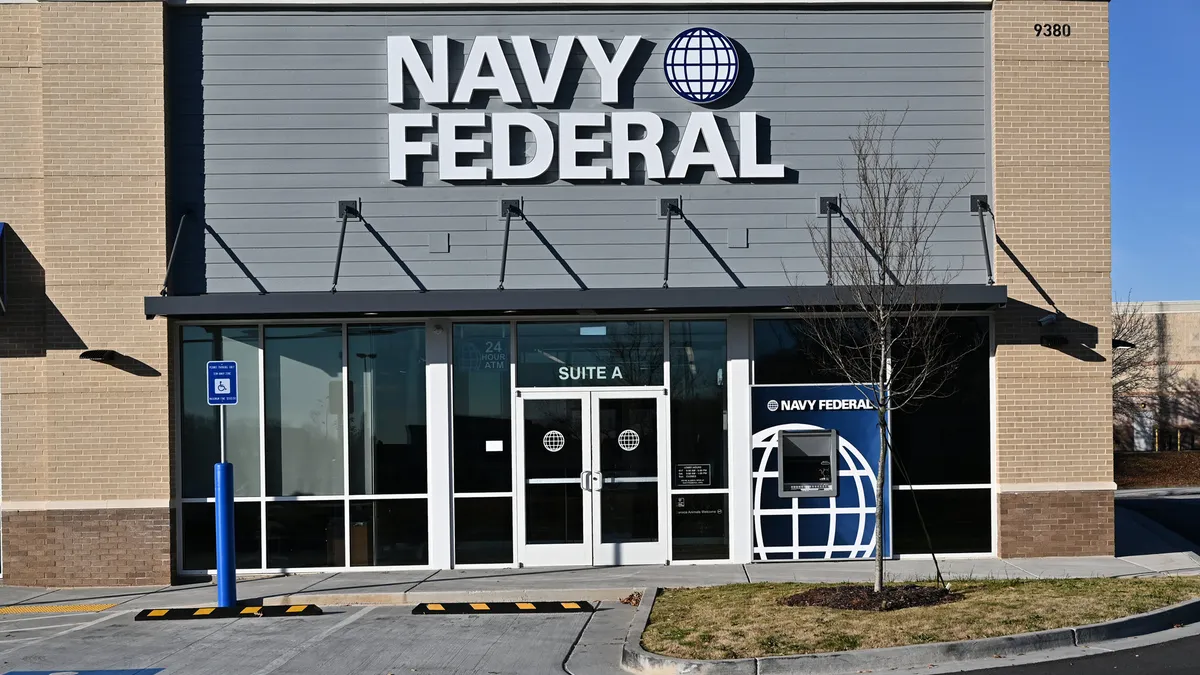Navy Federal Credit Union plans to continue expanding its branch network in 2021, bucking a trend that saw a record number of bank branches close last year, as the nation's largest credit union pursues its "multi-pronged approach" to serving the military community.
"A lot of our active-duty members are portable. They move around," said Richard Allen, vice president of branch operations at Navy Federal, which opened its newest branch in Douglasville, Georgia, last month and has eight more branch openings scheduled this year. "While the self-service capabilities, the online, mobile and ATMs work well to meet a lot of their fundamental needs, there's still a requirement, a need for them to be able to walk into a branch and get some financial guidance."
The credit union plans to open three branches in Texas, two more in Georgia, one in Washington state, one in South Carolina and one on Joint Base Pearl Harbor-Hickam, Hawaii, this year.
The not-for-profit financial institution's continued expansion comes as digital adoption and the impacts of the coronavirus pandemic have largely contributed to a record number of bank closures in 2020, according to S&P Global Market Intelligence.
U.S. banks and thrifts closed 3,324 branches nationwide last year and opened 1,040, S&P Global reported.
Christopher Marinac, research director at Janney Montgomery Scott LLC, said the acceleration of bank branch closures is expected to continue throughout 2021.
"2021 is the year of branch closures. We just simply had a very clear appetizer in 2020," he told S&P Global.
But for many tax-exempt credit unions, which operate within a field-of-membership requirement, branch expansion is key to their growth.
"Several credit unions are still trying to expand in the markets they serve, especially those that have more of a geographic charter rather than a [select employer group] charter," Jim Burson, managing director of the channels practice at the consulting firm Cornerstone Advisors, told American Banker. "And still a significant chunk of the marketplace values a branch when making decisions."
Navy Federal's goal is to be as close as possible — physically — to its 10 million members, Allen said.
"In some markets, that might mean being on base. But in other markets, it might mean being in and around the base," he said. "One of the unique things about serving the military is you're really not just serving that active-duty member, you're serving their family."
While the credit union already has a presence in Atlanta, opening the Douglasville location means 15,000 veterans are now 20 minutes closer to a branch, Allen said.
"That's how we look at branch expansion," Allen said. "When we're going to expand, we ask, 'Where are our members telling us they are at, and how do we best support them?'"
More than half of Navy Federal's 340 branches are on or within three miles of a military installation.
As Navy Federal pursues its strategy to expand where it members are in 2021, the pandemic has slowed the pace of that growth.
The credit union opened just three branches last year, and the eight it plans to open in 2021 is significantly less than the 15 to 20 branches it opens annually, on average.
"Like everyone else, we had to take a pause during 2020 as the pandemic forced everyone to just slow down a little bit," Allen said. "We continue to adapt to the changes that are coming with COVID and so we have scaled back the number of branches in 2021."
Some of Navy Federal's decision to scale back takes into account the nuances shaping branch design as a result of the coronavirus. However, Allen reinforced that expansion remains the strategy.
"Our members really want a combination of things. They want to be able to access Navy Federal when it's quick and easy, but they also want a place to go when they have questions or when they need financial education," he said. "We realize that it is that multipronged approach that works best for serving their needs, and so branches will continue to be a part of that."












